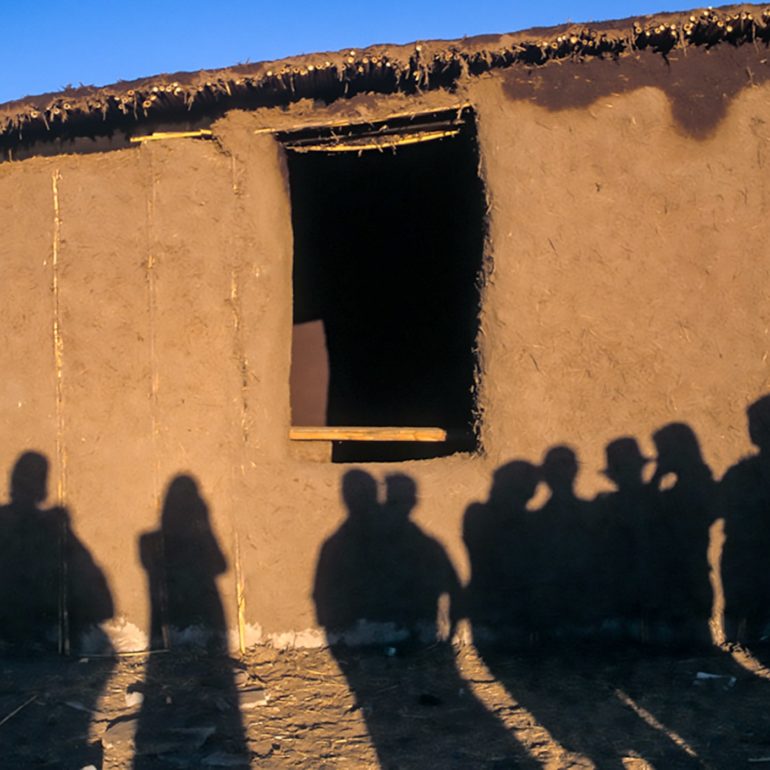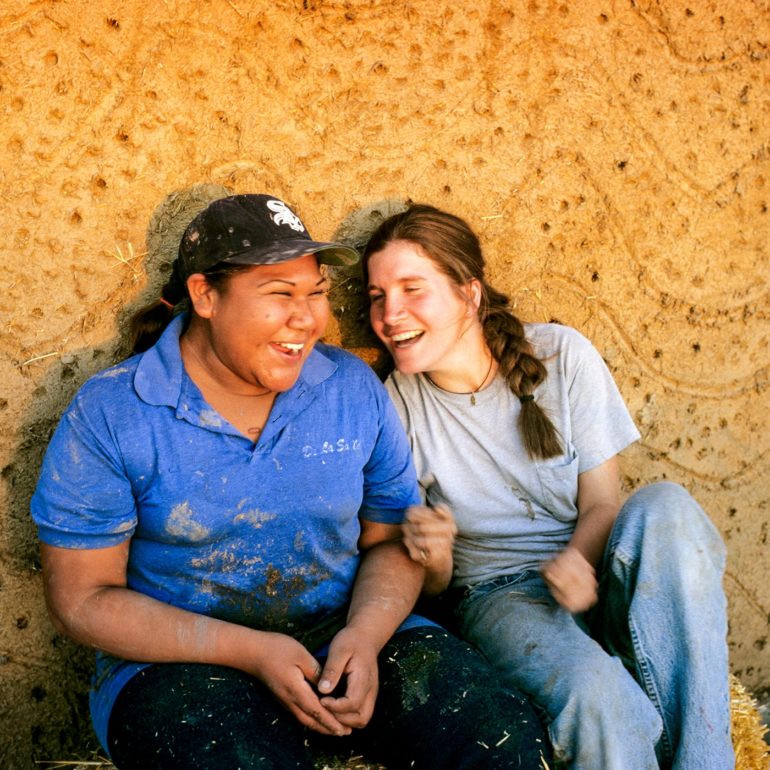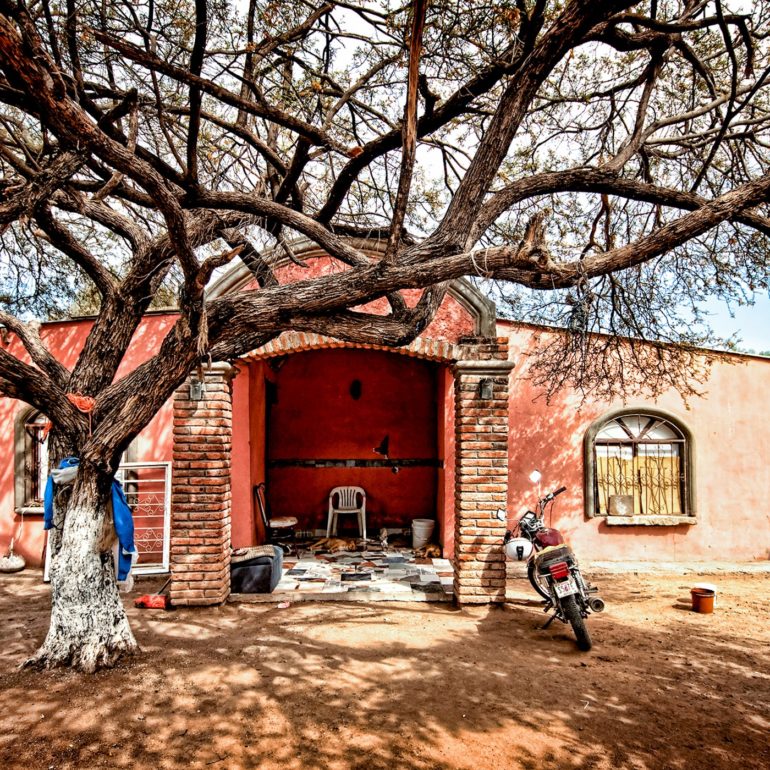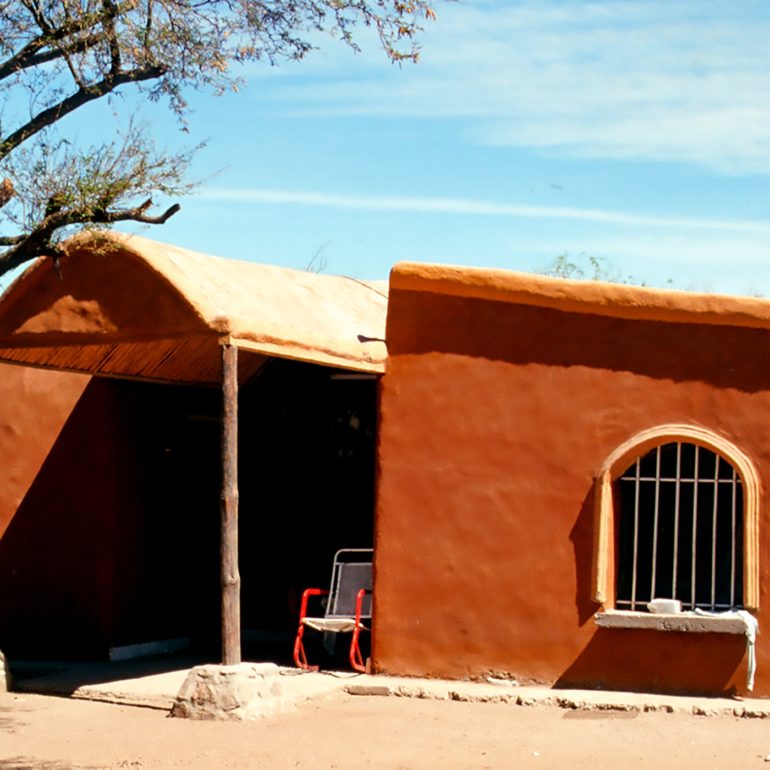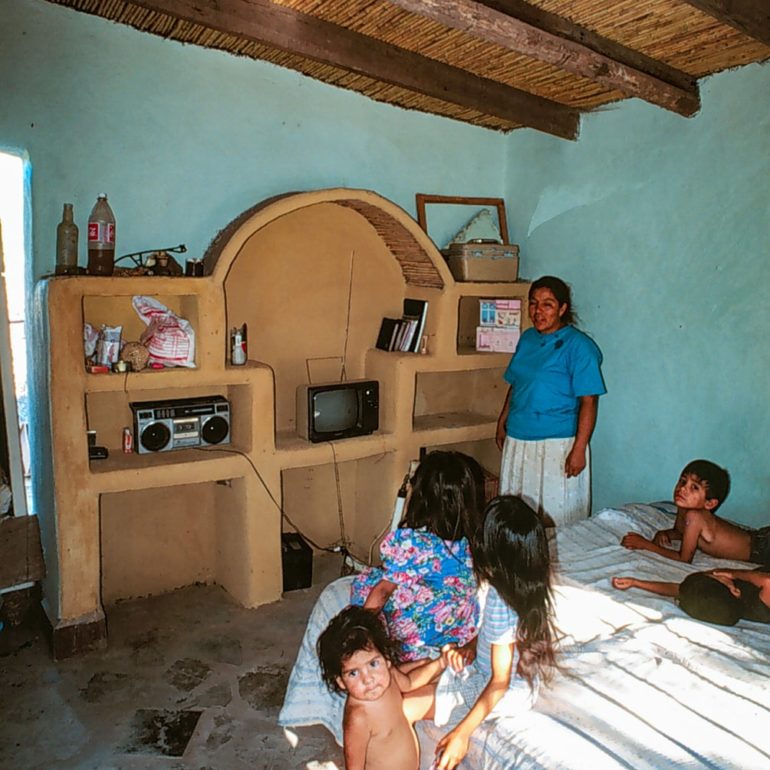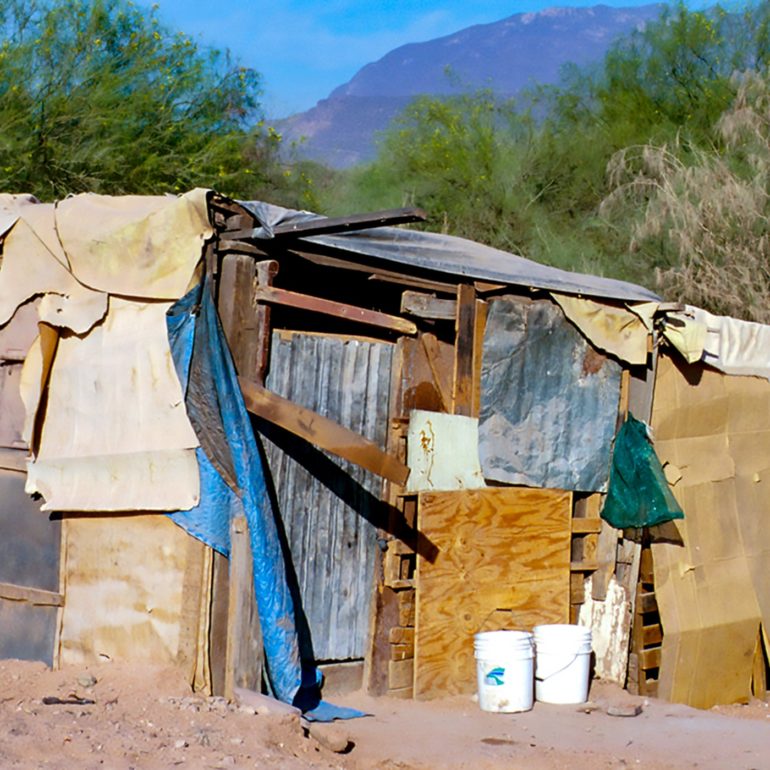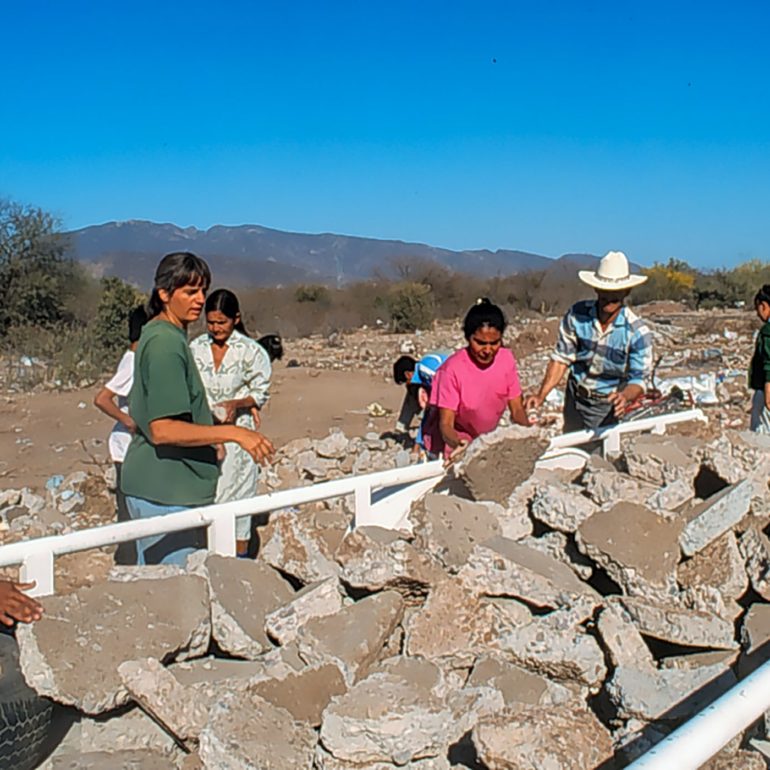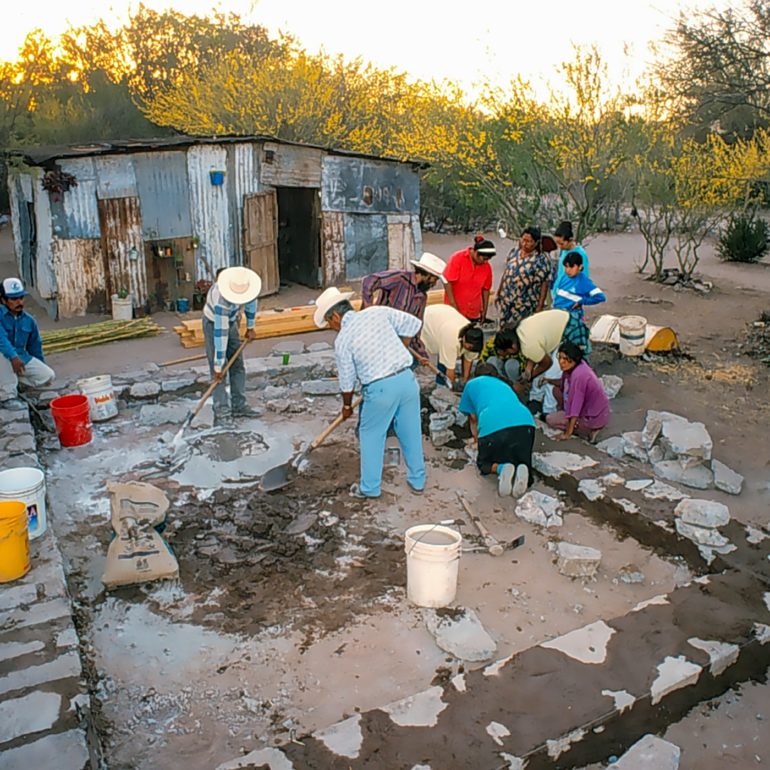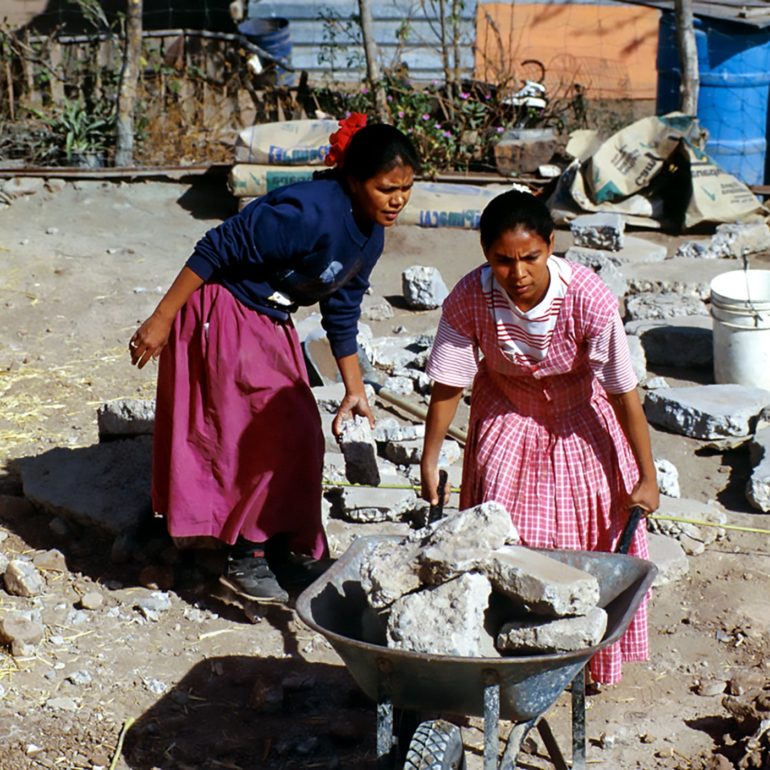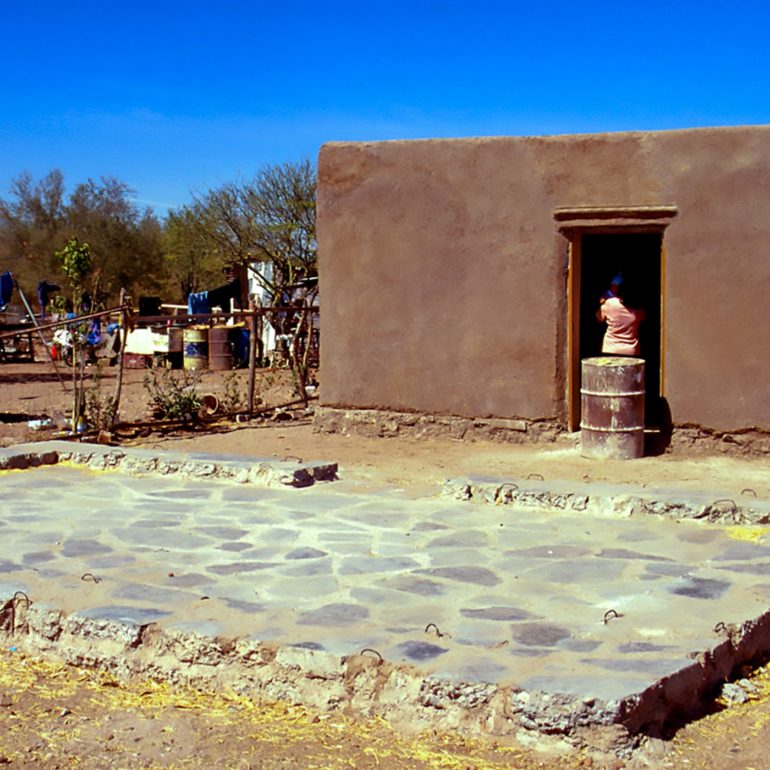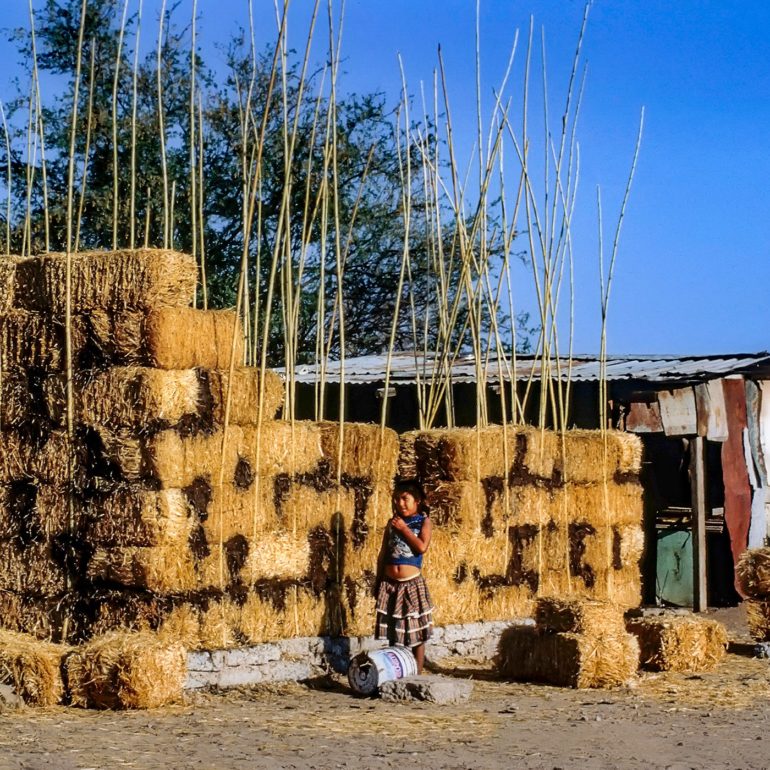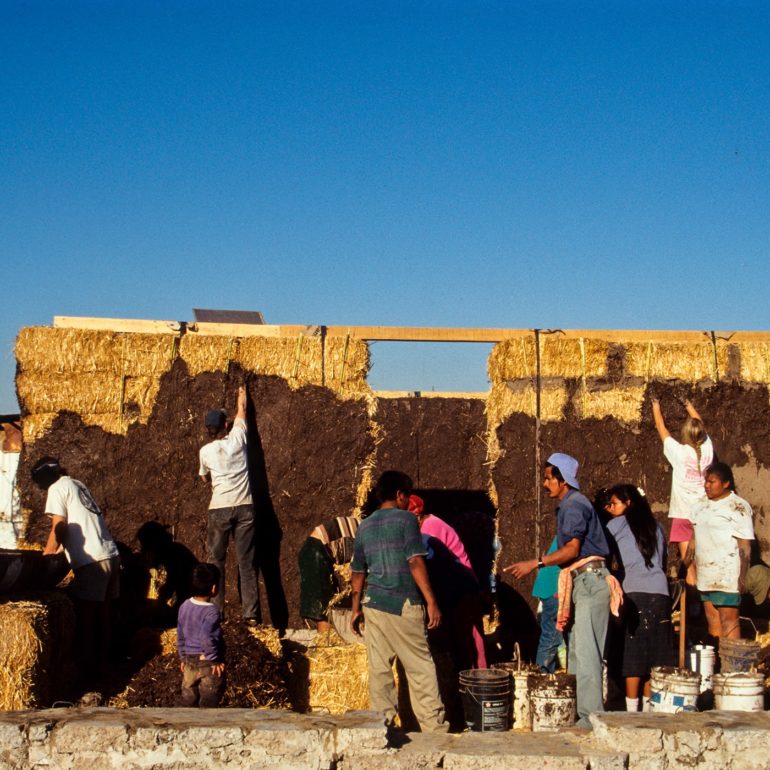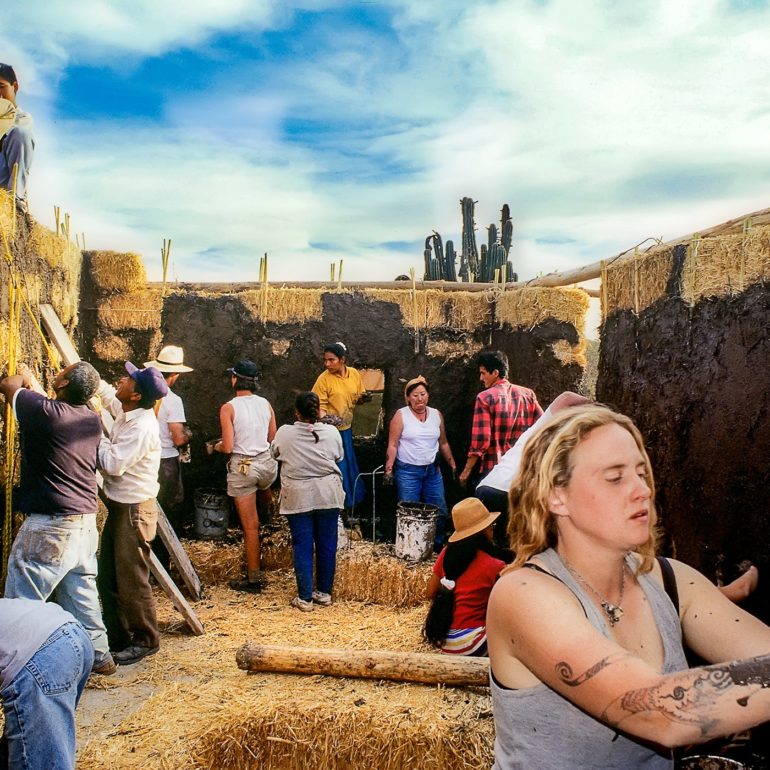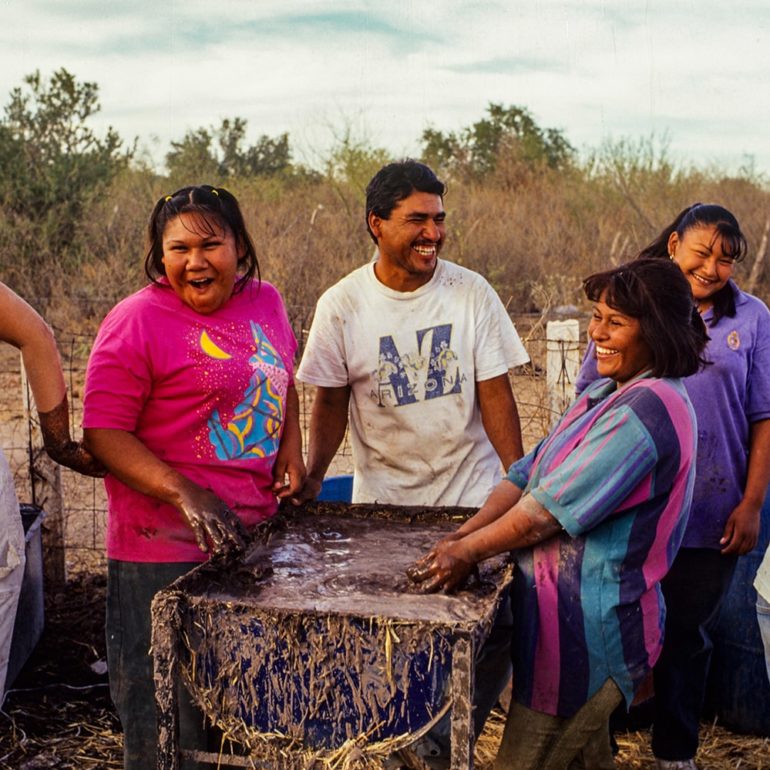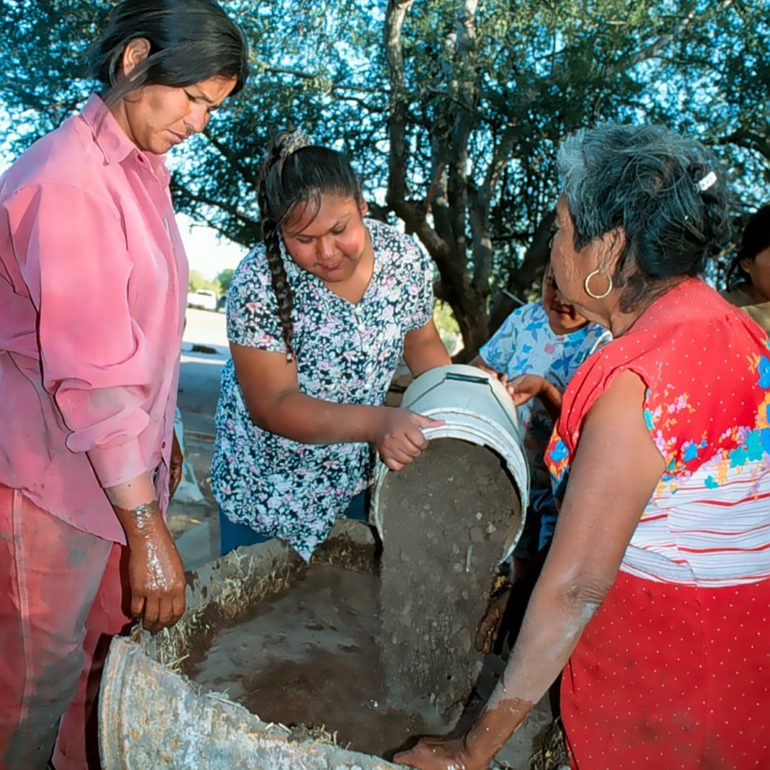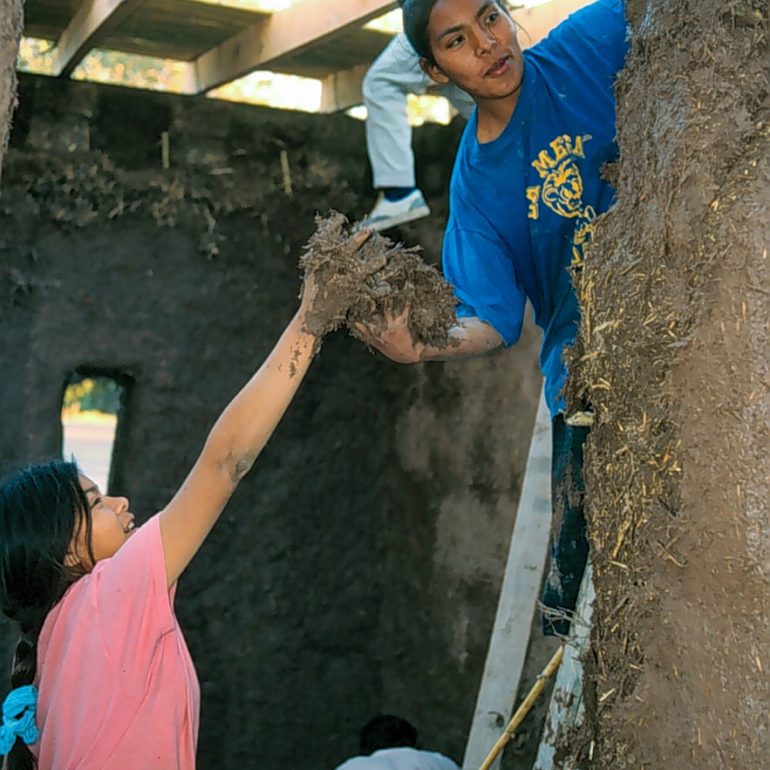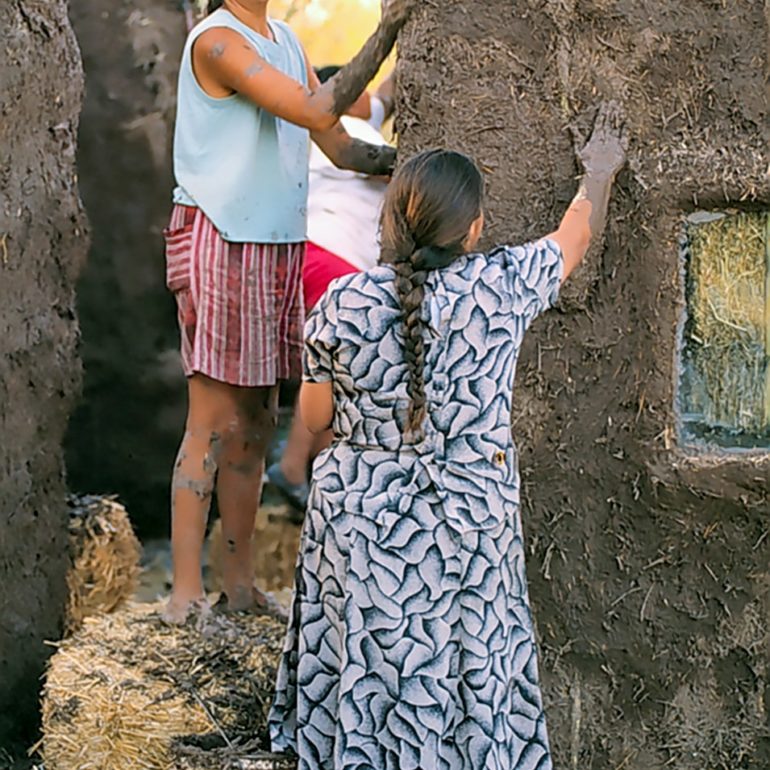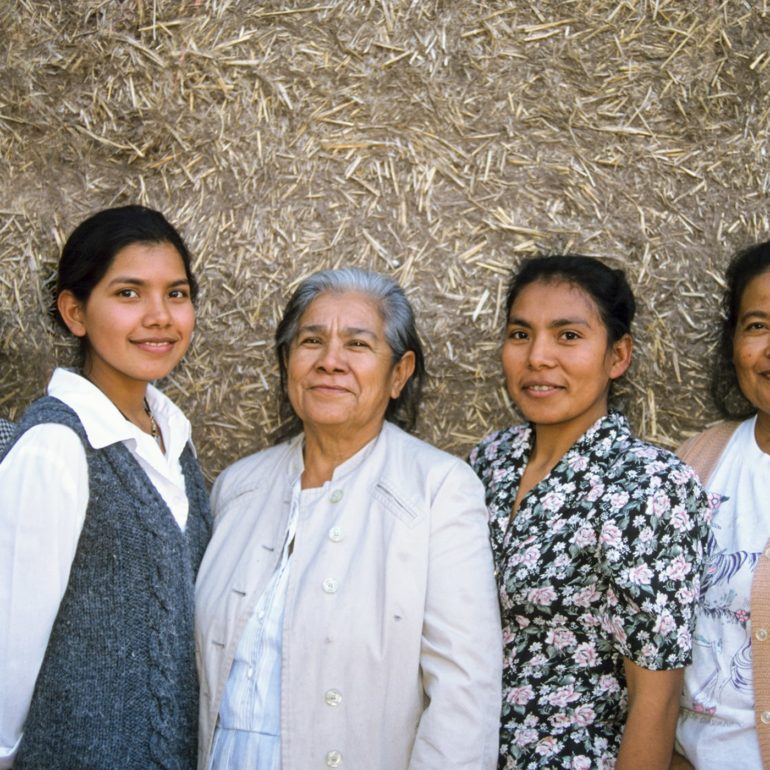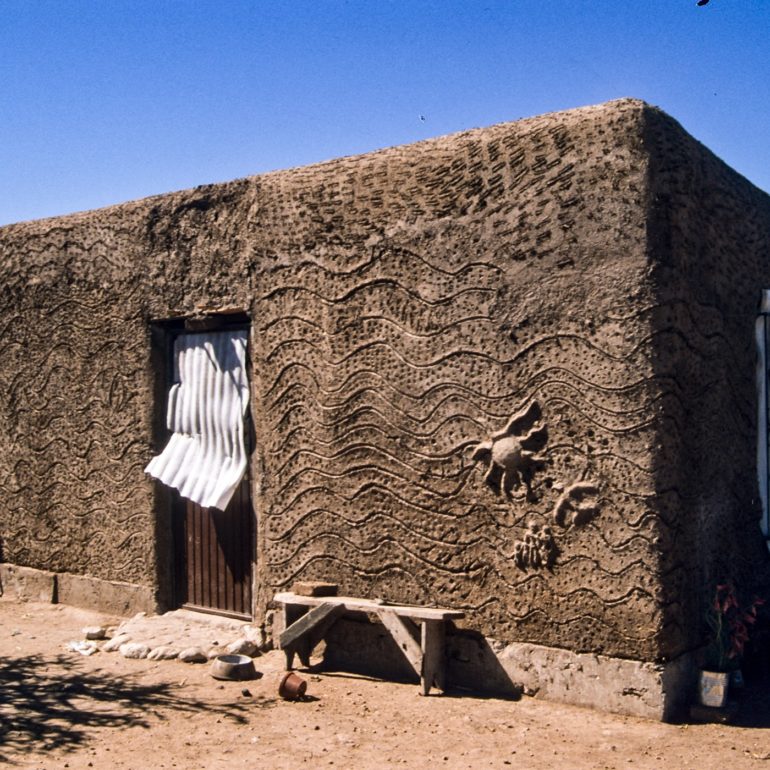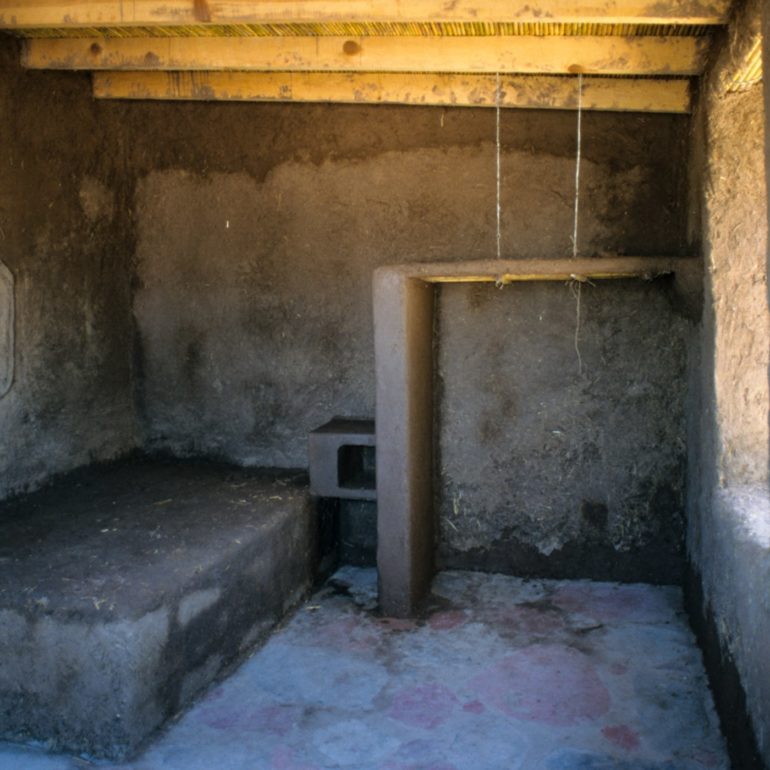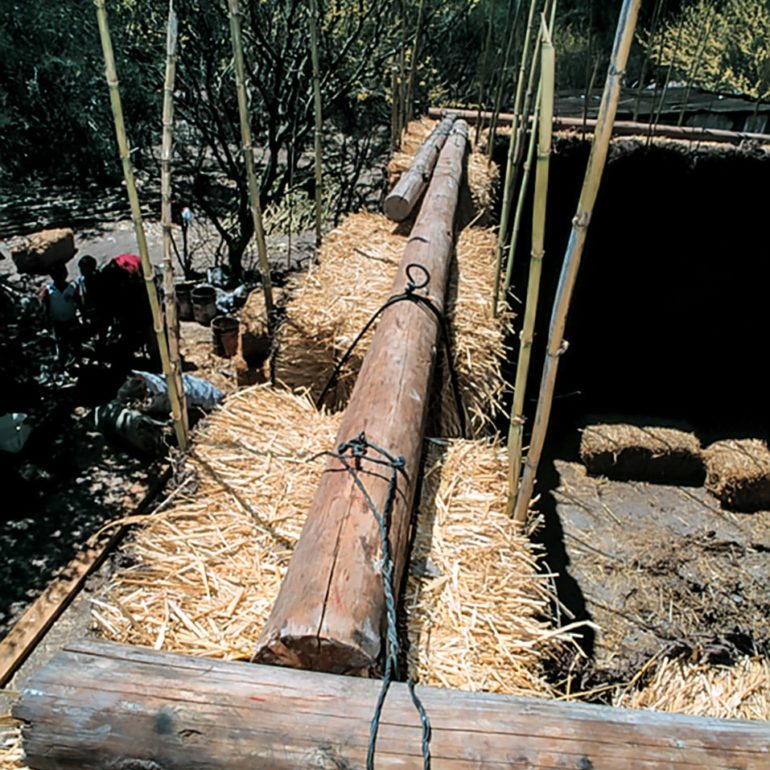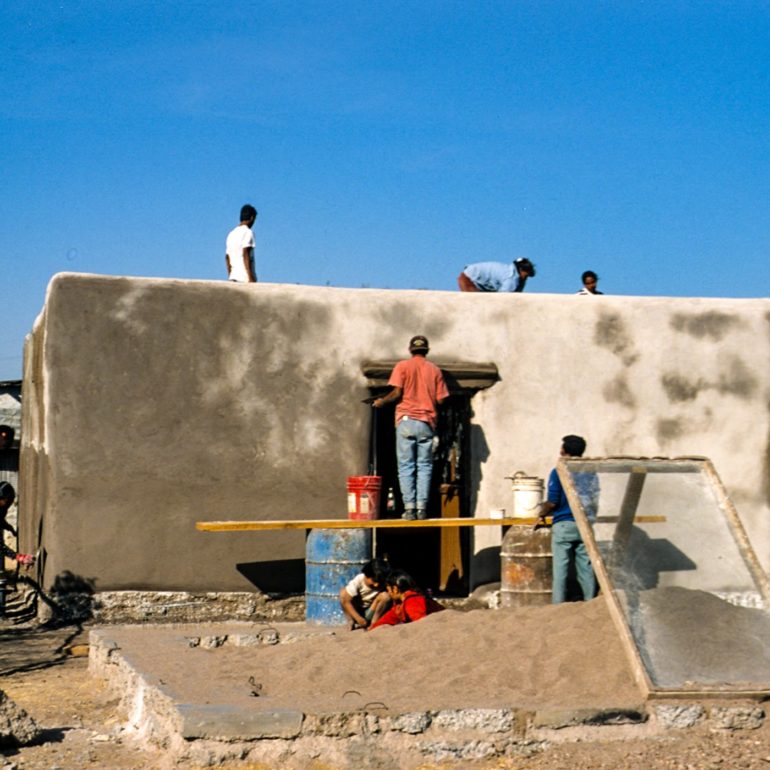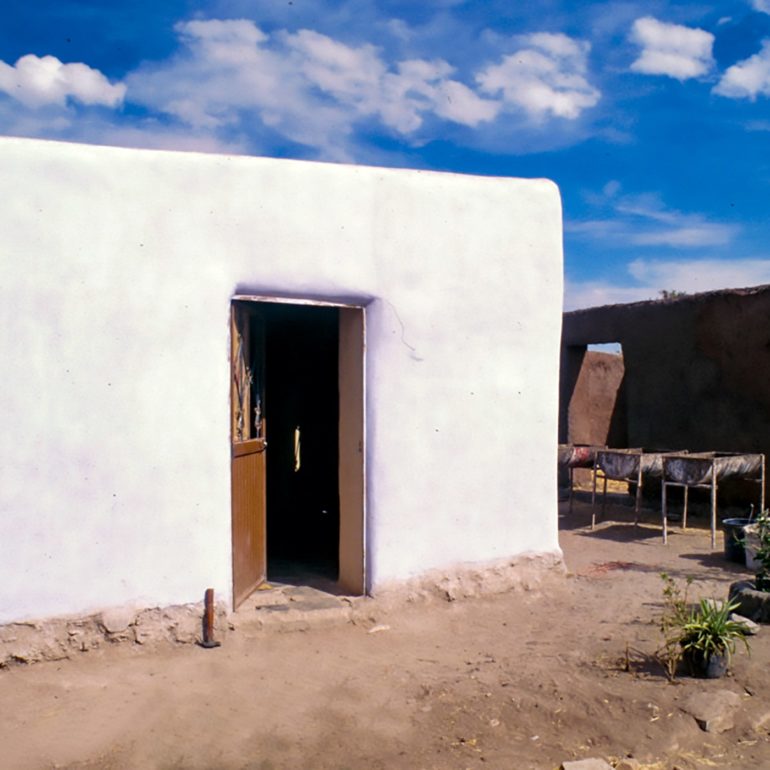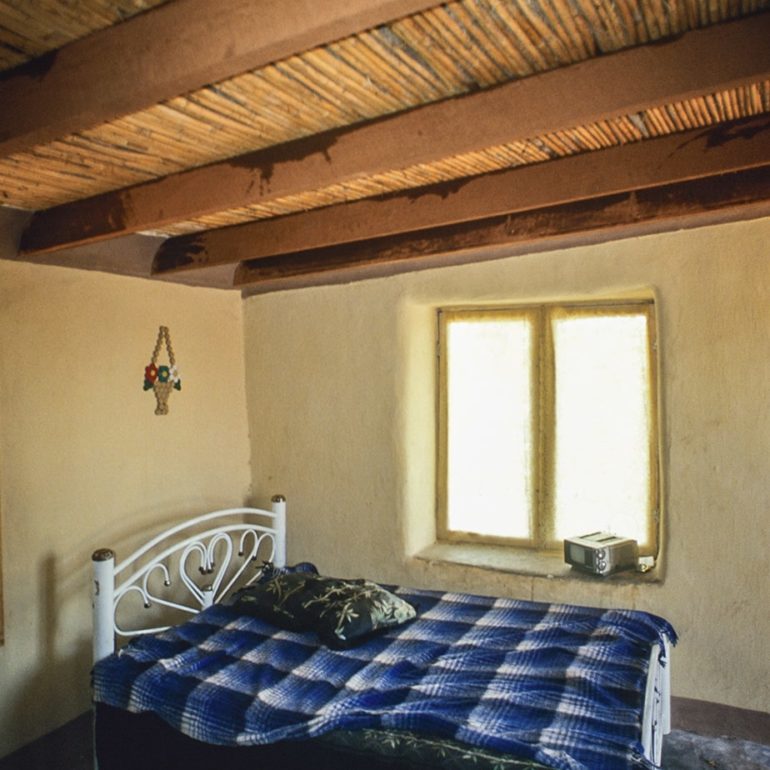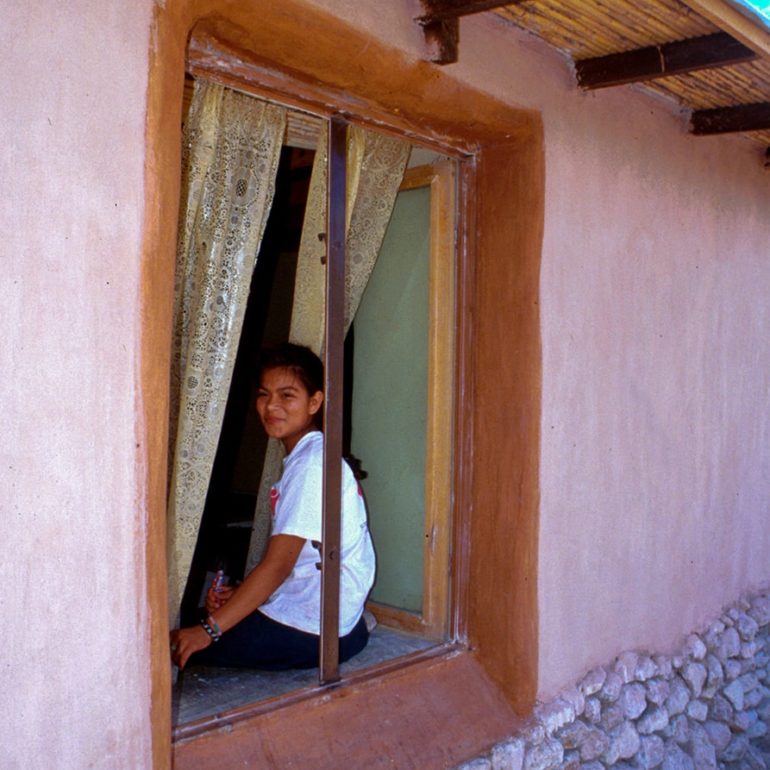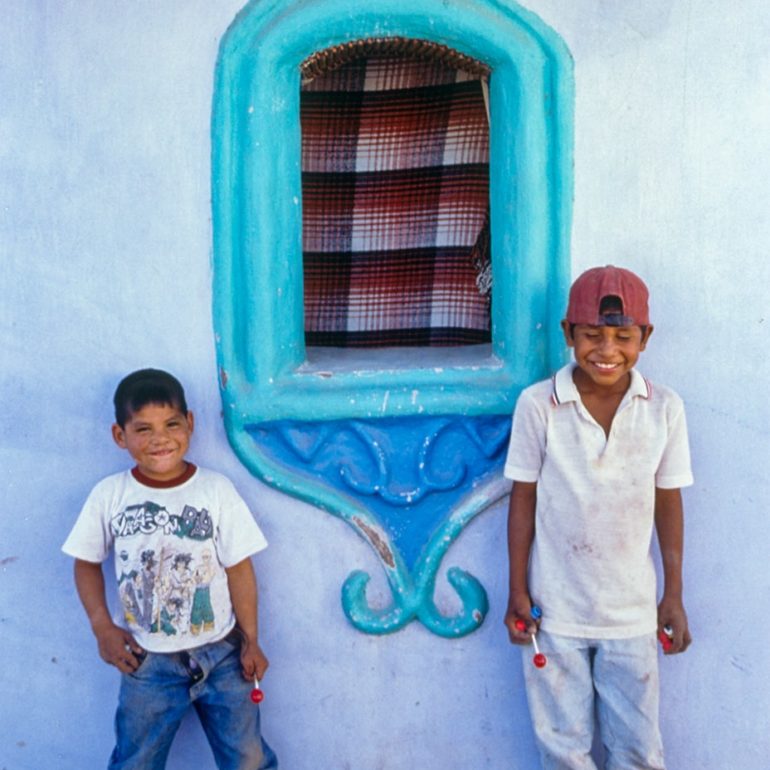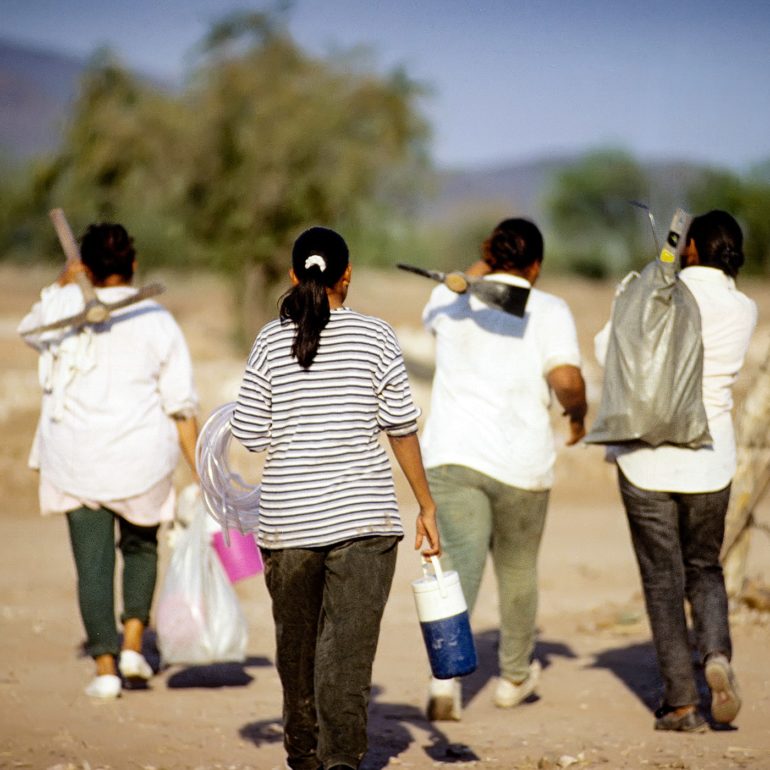Casas Que Cantan
Mexico Building Projects
Casas Que Cantan
"Houses That Sing"
A group of women come together
to build each other's houses.
Xochitl, Cuidad Obregon, Sonora, Mexico 1996-1998
A group of eight women, living in the community called Xochitl (“Flower” in Nauhuatl) on the outskirts of Cuidad Obregon, Mexico,worked together to help build each other’s houses. There was a tremendous need in that these were people living in shacks made of wood scraps, cardboard and black asphalt panels.
Responding to a request to help them build small houses, we co-developed a building system that used easily available, inexpensive materials and made a significant improvement in their living conditions. The idea was that they could eventually learn to do it themselves.
The cost of each house was $500. We received an overwhelming response from people all over the world who donated money to cover the cost of materials for each house. Their part was that they had to do the labor. We also conducted a series of workshops to help on some of the houses.
All of them were beautifully done, simple, but elegant in their own way. For the most part we collected concrete rubble for the foundations, used straw bales for the walls with clay plaster, 2×6 rough cut wood rafters covered with a reed known as “carrizo” and a roof surface from a mixture of straw and clay that was coated with lime plaster.
The unfortunate part of this story is that all of these people were squatters on land not well-suited for building. Their houses were at the base of a large irrigation canal that had banks approximately 10 feet tall which on a normal year would not be a problem. A short time after all the houses were completed, two major hurricanes struck the area, water accumulated behind the canal and backed up to the extent that most of the houses were inundated with water, never to recover.
Many of the lime plastered straw-clay roofs our Mexican co-workers wanted to use, required constant upkeep. In the end, it would have been better to spend and extra $250 for corrugated metal roofing.
A Short Story of One House
There was a shack pieced together from the conglomerate of old metal, cardboard, black asphalt sheets and other scraps. It was typical of much of the housing in that area. We thought of going in, but knew the oppressive heat would be even more unbearable inside. Next to it was the building we had come to see, one of the first women’s houses. With it’s soft colored lime washed walls, hand shaped door and window moldings, it stood in striking contrast to the shack. A curving band of river stones added protection and texture to the base of the earthen and lime plastered walls.
The door opened and out stepped Myra, the owner. Smiling, she shyly welcomed us all in. Drastically cooler inside than it was outside, everyone sighed with relief as they escaped into the cozy room. The flagstone-patterned floor made of recycled concrete pieces was refreshingly cool underfoot. The carrizo reed ceiling cast a warm glow on the plastered straw bale walls. Simply decorated, the two beds and other basic furnishings had obviously been positioned with great care.
“Oh, how wonderful!” exclaimed the guests. Myra’s face beamed with pride and delight. Someone politely asked her, “What do you think of it?” Her head momentarily lowered, then with her large dark eyes she reflectively scanned her new home and quietly replied, “You know, I always thought to have something this beautiful you had to have a lot of money. But now I know you don’t. You just have to be willing to work for it.”
